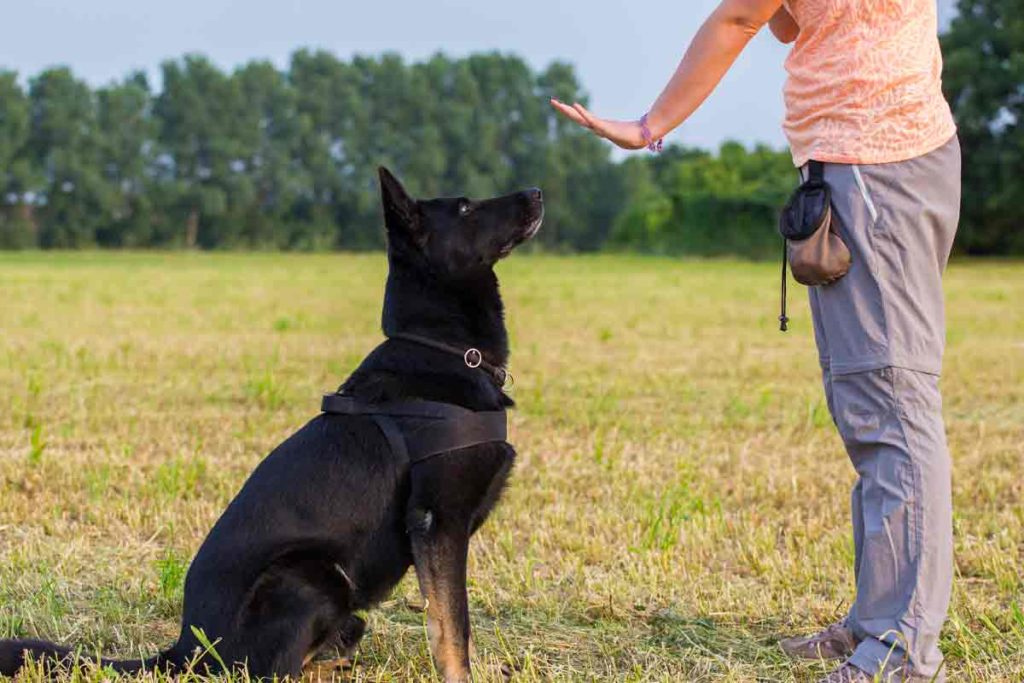It is often said that dog owners need to let their animal companions know who is the boss, to show them that we are the ‘leader of the pack,’ and to prevent them from acting on their innate desire to fight for dominance.
There’s an image of the wolf pack that endures—a dominant alpha male fights to defeat all challenges to his authority, chases off any threat to his pack, demands to lead, and punishes those below him. For years, the connection was made that our animal companions retained this innate hierarchy and desire for dominance from their wolf ancestors.
Pet owners have been told that an ‘alpha’ dog would challenge them for dominance in the home and that dogs would fight each other to become the leader. Training models cautioned that we must always show our dominance over our dogs and that they need to know their place in our pack through punishments such as ‘pinning.’
However, research in the last 20 years has shown both that the early studies of wolf behavior were wrong and also that it does not make sense to apply observations about wild wolves living in large packs to domesticated dogs living in a family setting. Wild wolves do live in large packs, and they are structured with a clear leader. Rather than being a constant battle for dominance, however, wolf packs operate in more of a ‘family structure’ with the leaders being seen as parent figures who watch out for the pack from the rear, ensure that younger or weaker members are fed first, and teach younger wolves the skills they need to go off and form their own packs as they mature.
Our companion dogs that have evolved alongside humans for thousands of years enjoy a more complex pack system in our homes. Dogs know we are different species, and their behaviors aren’t geared to dominate us but to feel safe and gain the rewards they enjoy. Our job is to offer clear expectations and to make sure that our pack is a safe and happy one.
Knowing your pack
Just like people, dogs have a range of personalities. And of course, just like people, each dog can exhibit the entire range of these personality traits depending on the situation. It is often thought that a dog’s breed determines their behavior, but recent studies have shown that a dog’s sex, age, and environment are much stronger influences on their actions.
The American Kennel Club has identified a few common types that show up regardless of breed. These include the dominant, confident leader – a ‘bossy-pants’ who wants to rule the household; the adaptable, more submissive follower – a cheerful playmate who is up for anything; the insecure, needy dog – rolling over on their backs or easily giving up a toy, who needs gentle coaching and consistent companionship; and the independent, non-human focused dog who benefits from challenging mental and physical tasks.
Every group has leaders and followers and dogs are no different. The level of submissiveness helps to show their place in the hierarchy. A dog will show deference to a higher status dog by lowering their posture or rolling over onto their backs. Younger dogs especially might use ‘body wagging’, broad, rapid tail sweeps that might wag the whole body, to let another dog know they are being more submissive. A more dominant dog might stand over another dog, even placing their paws on the other dog’s shoulders; they might bark or bristle in response to another dog. It is important to remember that a dominant dog is not the same as an aggressive dog. Aggression arises from fear or a negative experience, either environmental or taught.
We as pet parents need to understand our dogs and their personalities so they can cheerfully face any situation and we can create a positive home environment where dogs and people thrive together in their ‘pack.’
Training
Based on the outdated ideas of the wolf pack, some dominance-focused training methods have persisted. People were told to never allow dogs on furniture (especially the bed), to always eat before the dog, to never let the dog walk ahead of them, and to establish dominance physically over the dog through ‘alpha pins’ or other shows of force.
We know that positive reinforcement allows us to identify and encourage the behaviors we want in our homes and with our dogs. Pairing food and verbal rewards with goal behaviors will ensure your dog understands that you are the leader in this group. Your dog wants clear structure and leadership, and as long as you are consistent with what you allow or don’t allow, your dog will settle into their expected role as this is normal pack behavior.
Even the most confident dog will look to their person for guidance, and as long as your dog understands the expectations, you don’t have to worry that allowing them to snuggle on your bed will lead to a battle for control. We can guide our animal companions by understanding their individual personalities and offering the supportive training needed to allow them to be confident members of our households.
Your dog isn’t misbehaving in order to assert their dominance as pack ‘alpha’, but is probably responding to a stressful situation or acting in a way that gives them the food or attention reward they are seeking. A positive reward training model works when the human doesn’t see the dog as an adversary in a battle for dominance.
Desired behavior should be rewarded with a treat or verbal praise, and this training should be repeated until the dog learns the command action being taught. For example, if you don’t want the dog to beg at the table, everyone must be sure to only feed the dog in their bowl and not to make any exceptions. Dogs don’t make a connection between undesired behavior and punishment after the fact, so it is not effective.
Be very careful with a dog that is displaying aggressive behavior, particularly in a household with children. Study your dog’s body language and be alert for outward signs of aggression like bared teeth, raised hackles, or stiff tails. Practice positive reinforcement and limit situations where the dog becomes aggressive. Especially if the dog has been abused in the past, it will take a lot of patience to change your dog’s aggressive behavior. Talk with your veterinarian about possible medical interventions.
Adding to your family pack

Bringing a new dog into the existing family group is a joyful event, but it needs to be done thoughtfully with consideration for your current dog’s personality. A dog that has been socialized to be comfortable meeting new animals and people will adjust more easily, so be sure to give puppies a wide range of experiences from the beginning, and they will be more open to accepting a new member of the pack later on.
Your ‘old’ dog knows their house, their routines, and their people, and it might take some time for them to welcome a newcomer into the group. Introduce the dogs slowly, beginning with offering a scent article such as a bed or toy before they even meet. Give the dogs a chance to meet on neutral ground or outside if possible. Allow them space to interact and do not force them eye to eye. Then, slowly progress to having them one at a time in your house, perhaps in separate rooms, and then finally both together in the house. Be patient, and be sure to keep a close eye for any signs of irritated or aggressive behavior.
There is currently debate about the roles each dog plays in the hierarchy of the home and whether or not there are ‘alpha’, ‘beta’, and ‘omicron’ dogs in your home pack. Casual observation of dogs together definitely shows that they are not all seen as equals in the eyes of other dogs. Puppies will be tended to by their mother, although depending on her temperament, she might allow other dogs to ‘co-parent’. Older dogs in the home will ‘correct’ pups with nips or growls to let them understand ‘proper’ behavior.
Sibling rivalry might occur between the dogs of your home and will usually sort itself out on its own as the dogs establish their relationships. Feeding dogs in separate bowls (and maybe in separate areas) can help prevent resource guarding, and resisting the urge to micro-manage the relationship by making sure each has an equal number of toys, etc. will allow them to fall into their natural fit based on their personalities.
Individual walks and playtime will support the more submissive dog and build their confidence while maintaining a sense of balance for the more dominant dog. Being calm, fair, and consistent in your expectations for all of the dogs by making sure the rules are the same for all in the home will minimize any rivalry. It is important to recognize what each dog needs and go from there.
Knowing your dog and how they react in certain situations is key to developing the strong bonds of our family packs. Patient, positive training allows us to shape our dog’s behavior and ensures that our dogs, whether they are confident leaders who let us know when it’s time for a walk or more tolerant doggos who allow themselves to be dressed in tutus, continue to be the special members of our pack.
Sources:
https://www.wolf.org/wp-content/uploads/2013/09/267alphastatus_english.pdf
https://www.sciencedaily.com/releases/2015/08/150827083542.htm









